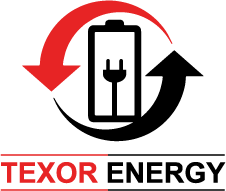Energy Storage Systems(ESS)
ABOUTBattery Energy Storage Systems (BESS’s) are a sub-set of Energy Storage Systems (ESS’s). ESS is a general term for the ability of a system to store energy using thermal, electro-mechanical or electro-chemical solutions. A BESS utilizes an electro-chemical solution.

Benefits of Lithium as
BESS
Data and communication
experts for BESS
Staying ahead of
change
Lithium – these offer good energy storage for their size and can be charged/ discharged many times in their lifetime. They are used in a wide variety of consumer electronics such as smartphones, tablets, laptops, electronic cigarettes and digital cameras. They are also used in electric cars and some aircraft
Our unique combination of technology toolbox, applications experience and product development aptitude empowers customers with a capable partner for flexible, intelligent communication solutions required to truly realize a sustainable and smarter power grid.
Our lives and the way we do business depends on a sustainable energy supply. But decarbonization, decentralization, and digitalization are leading to a radical transformation of the energy landscape. Increasing integration of power from renewable sources also poses challenges to power grids.
The Texor Difference
One source for communication & networking solutions geared for Industry 4.0
Expertise with CAN-based systems and various energy and cloud protocols
Partner for concept development, system design, deployment and support
Reputable, reliable supplier with global availability
Seamless international project collaboration
Power Wall Inverter
PowerTEXOR ENERGY Power wall battery solution provides the user with the option to control how and when the energy is used by storing energy from the photovoltaic (PV) system and/or from the grid to then be used when the electricity is more expensive.
This option helps save money on the electricity bills and cut down on the PV system payback times. As the Powerwall battery is perceived as being a cheap energy storage solution and energy usage can be controlled, three scenarios were considered to determine which is the most attractive to invest in. One is an on-grid PV system and Powerwall solution without grid injection incentives, then an off-grid PV system and Powerwall solution, and lastly a Powerwall solution without a PV system.
Specification
| Model | |
| Inverter Capacity | 650VA |
| Energy Storage | 2Kwh |
| Backup –Time | 335 W -4Hrs |
| Suggested Load | 350 W (i.e. 2 fan ,1 Wifi Router,5 Led Bulb (9W), 1LED TV 42”,1 Laptop |
| Charging Time | 2-3 Hrs |
| Weight | 35Kg |
| Battery life | 7-10 years |
| Warranty | 2 years on electronics |
| 5 years on battery | |
| Solar Connectivity | Upto 500 Wp PV |
| Dimension* | 200*50*80 cm |
| Installation | Wall mount |
| Battery Efficiency (DoD) | 80% |
Specifications

| Model | |
| Inverter Capacity | 650VA |
| Energy Storage | 2Kwh |
| Backup –Time | 335 W -4Hrs |
| Suggested Load | 350 W (i.e. 2 fan ,1 Wifi Router,5 Led Bulb (9W), 1LED TV 42”,1 Laptop |
| Charging Time | 2-3 Hrs |
| Weight | 35Kg |
| Battery life | 7-10 years |
| Warranty | 2 years on electronics |
| 5 years on battery | |
| Solar Connectivity | Upto 500 Wp PV |
| Dimension* | 200*50*80 cm |
| Installation | Wall mount |
| Battery Efficiency (DoD) | 80% |









